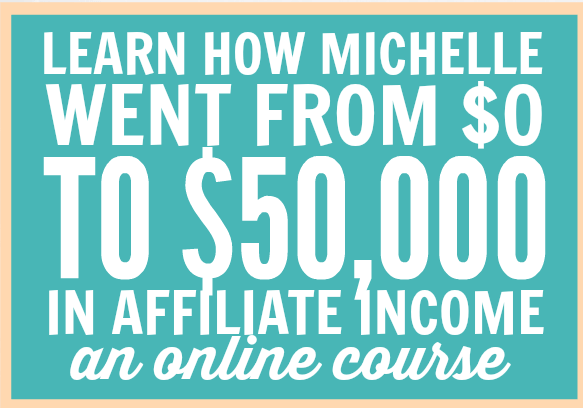Are you tired of being broke? Sick of drowning in payments? Are you ready to break the paycheck to paycheck cycle?
It doesn’t have to be this way.
Dave Ramsey’s seven step plan has helped thousands of Americans to get out of debt, build wealth, and attain financial freedom.
*Disclosure: This post contains affiliate links. Read our full disclosure policy here.
Who is Dave Ramsey?
Dave Ramsey is a personal finance expert, author, and radio talk show host. He teaches a money management course called Financial Peace University (which my hubby and I have taken – and it’s awesome!) and his company often hosts live events such as Money and Marriage – A Date Night Worth Investing In.
The Seven Baby Steps
Dave Ramsey’s plan is quite simple – follow the seven steps below to get out of debt and achieve financial peace.
- Save an $1,000 emergency fund.
- Pay off all debt (except for the mortgage).
- Put 3-6 months of expenses in savings.
- Invest 15% of household income.
- College funding for children.
- Pay off mortgage.
- Build wealth and give!
Step One – $1,000 Emergency Fund
As Dave Ramsey says, the first step to getting out of a hole is to stop digging. When you’re buried in debt and you want to get out, you can’t keep adding to your debt load. Many people put emergencies on a credit card, which leads to more and more debt. Instead, Dave recommends saving $1,000 so you have cash on hand if an emergency comes up.
An emergency is something you are not prepared for – it is not something that you’re aware of ahead of time. Christmas is not an emergency. Buying a new set of snow tires for your car isn’t either. Neither is your dog’s annual visit to the vet for his shots. The emergency fund is for a true emergency – this could be an unexpected medical bill, a necessary home repair, or a car repair.
What if your emergency costs more than $1,000? The purpose of the emergency fund is to help you out (so you don’t use a credit card) while you figure out a way to cash flow the rest of the cost of the emergency. This means that the cash you would normally put toward your debt snowball (which we’ll cover next), would instead go to paying for the emergency.
Step Two – Debt Snowball
Once you have $1,000 in savings, the next step is to start paying off all of your debt (except your mortgage). If you don’t have any debt – congratulations! – you can move on to step three. For those of us who have debt, Dave recommends paying it off using the debt snowball approach.
With the debt snowball, you make the minimum payments on all of your debts and put extra toward the debt with the lowest balance. Once the smallest debt is paid off, you then move on to the next smallest debt, and so on until all debts are paid in full.
As you pay off each debt, your minimum payments decrease which frees up more money to put toward the extra payments. This is why it’s called a “snowball”. As you continue, you gain momentum as you snowball your way through each debt.
Many people disagree with Dave’s debt snowball approach and instead recommend that debt avalanche. With the avalanche, you pay off the highest interest debt first instead of the smallest debt. This would allow you to pay off your debt faster, but Dave argues that the snowball is more motivating (when you pay off small debts, you get some “quick wins”) and you’ll be more likely to stick with it if you can see progress right away.
Step Three – 3 to 6 Months of Expenses in Savings
Once the debt is paid off, it’s time to focus on saving. “Three to six months of expenses” looks different for different people. The most common numbers I’ve seen are $10,000 and $20,000. If you’re a single person on a low income, your number might be lower. If you have a large family and/or a high income, six months of expenses might be more than $20,000. Pick what works best for you.
The purpose of this savings account is to replace your income if you were to face an unexpected job loss. The money could cover your expenses while you look for a new job – this prevents you from having to rely on debt during your transition period. It could also be used for any large emergencies, such as a serious medical issue or some other disaster.
Step Four – Invest 15% of Household Income
Now that you’re debt-free and have three to six months of expenses in savings, it’s time to bump up your retirement savings. Ideally, you would’ve already been saving some money for retirement. If your company offers a match, you should contribute at least enough to get the full match.
I’m not currently saving for retirement because my company doesn’t offer a match and I’m focused on paying off my loans. My hubby contributes 4% of his income to retirement because his employer offers a 100% match up to 4% of his salary. Once we’ve completed baby step number three, we’ll start investing 15% of our total household income.
Dave recommends putting that money into a Roth IRA and/or pre-tax (401k) retirement accounts. His colleague Chris Hogan has a book called Retire Inspired, which lays out exactly which types of accounts and funds are best. I highly recommend reading it.
Step Five – College Funding for Kids
If you have children, the next step is college funding. Dave recommends using an ESA (“education IRA”) or a 529 plan. Note that college funding comes AFTER saving for retirement. The idea here is that paying for your son or daughter’s education shouldn’t delay your retirement.
If you don’t plan to have children or your kids have already finished college, you can move right along to the next step.
Step Six – Pay off the Mortgage
How amazing would it feel to not have a mortgage payment? Let’s say your mortgage is $1,500. What could you do with an extra $1,500 a month? Anything you want! You can use the debt snowball to pay off your mortgage as quickly as possible.
Step Seven – Build Wealth and Give (Financial Freedom)
By this point, you are:
-100% debt-free (including the mortgage!!)
-Sitting with 3-6 months of expenses in savings
-Set for retirement
-No longer worried about how your kids are going to pay for college
Now comes the fun part! It’s time to live and give like no one else. What have you always dreamed of doing? Do you want to quit your job and start your own business? Want to travel the world? Want to own rental properties and start building wealth? Ready to give generously?
Dave recommends both enjoying your newfound financial freedom and giving generously. It’s time to live and give like no one else!
What would you do if you achieved financial freedom?
Ready to take control of your finances? Download my guide to setting up a budget and read Dave Ramsey’s book The Total Money Makeover.





Really well written article! I’ve always wondered about his methods and this is a great overview. Also, congrats on getting the car loan paid 90% off!
Thank you!